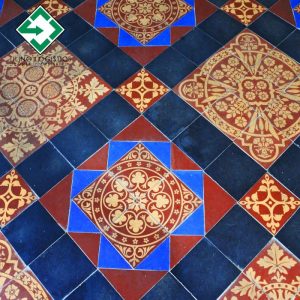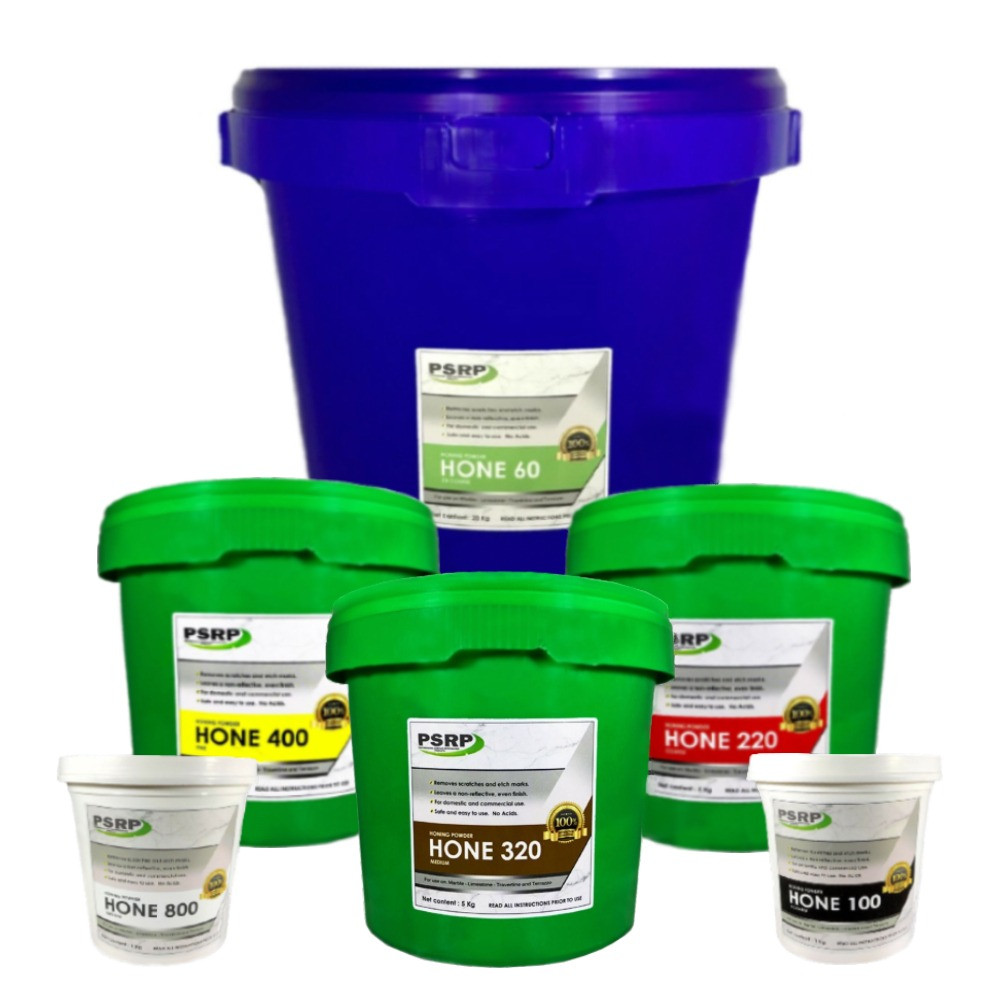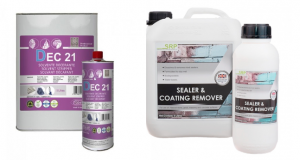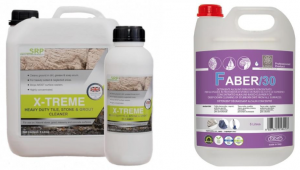We use cookies to ensure that we give you the best experience on our website. If you continue to use this site we will assume that you are happy with it. Learn more
How to Clean Victorian Tiles Walls and Floors - Refurbish Edwardian Flooring
How to Clean Victorian Tiles Walls and Floors - Refurbish Edwardian Flooring with Specialist Supplies

There have been a number of posts recently relating to cleaning Victorian & Edwardian Geometric and Encaustic floors. Quite often we receive calls from customers who have been lucky enough to acquire a British Victorian home or property that boasts a plethora of period features, usually including authentic tiles on the flooring, walls and around old fireplaces (vertical surfaces).
During the Victorian era, it was customary to tile most surfaces around the home, including the hallway floors as a first welcome to guests. Intricate and colourful patterns decorate these hallways, even using encaustic tiles. Porch floors and walls were also tiled with skirting, dado, and feature tiles in eye-catching designs. In contrast, bathrooms and kitchen walls were adorned with plainer hues of off-white as a contrast. It's also common to see Victorian and Edwardian garden paths decorated with chequerboard tile designs with a border.
Victorian floor tiles were typically made from ceramic or encaustic materials. Ceramic tiles were made by pressing and firing a mixture of clay, minerals, and water at high temperatures. While encaustic tiles were made by layering different colours of clay before compressing the layers under high pressure. The result was a tile with a pattern that ran all the way through, making it more durable and long-lasting. Edwardian tiles were often made from more durable materials such as clay, which was fired at higher temperatures. When fired, these materials had a harder, more durable finish. Both Victorian and Edwardian tiles share a love for intricate and colourful designs. Edwardian tiling manufacturing benefited from the introduction of new materials and techniques. These techniques led to the production of more durable, long-lasting tiles.
Victorian Tiles Restoration - Method of Cleaning Floor Tiling and Products Used
If you're a new owner of a property with Victorian or Edwardian surfaces looking for tiling refurbishment cleaning products, or a simple way to restore old tiles, here's our guide on how to clean these floor and wall tiles. Along with our instructions, we have a list of recommended cleaning products to restore to surfaces to their former glory and colour.
Typically, the phrase "Victorian floors" loosely relates to old floors found in Victorian or Edwardian properties. Many people find these stunning surfaces underneath carpet wood or linoleum after moving into a new house or during home improvement.
These floors are usually made up of small, unglazed tiles in natural earthy colours mixed together in geometric patterns. Sometimes you may come across what is known as encaustic tiles (the patterns are created by thin slips of different coloured clays that produce the same effect as marquetry in woodwork).
This type of surface is also typically laid with very tight joints preventing any movement issues. This may have something to do with the typical bed, i.e. a lime mortar but is usually down to the skill of the fixer at the time!
How to assess a Victorian or Edwardian floor and choose the correct cleaning products for restoration and refurbishment
What do you do? Well, the short answer is to assess it. If you are unsure what the contaminants are, call us on 0121 773 9129 for a quick chat or Contact Us outside of office hours.
After many years, floors are sure to have gone through a lot of traffic and become contaminated by various stubborn, unwanted substances. As well as dirt, it is more than likely that surfaces are riddled with damage and pits. We understand that replacing tiles is not always possible. There is not much that can be done to fix this damage without replacing the tiles in question. However, we understand this is not always ideal. Using advanced methods, repairs to Victorian and Edwardian tiles are possible, but that is a blog for a different day.
Over the years, countless forms of dirt and residues defile floors such as paint splashes, oils, and wax polish. After a recent renovation project, it is even possible that cement or plaster covered these floors and walls. Inevitably, general dirt and grime also build up on surfaces over time. Another common issue with floors like this is that around the perimeter there may be the remains of a 'contact' type adhesive, or even nail holes used to secure carpet gripper rods.
After assessing the problem it's time to begin cleaning the Victorian or Edwardian surface
Remember, the following instructions are suitable for both Victorian or Edwardian floor and wall surfaces. The most important step in this process is to sweep or wipe away any dry debris or dust on the Victorian or Edwardian floors and walls prior to beginning this process.
1. Start the process with a powerful and deep cleaner
Firstly, to clean your Victorian or Edwardian surfaces you need to use a potent deep cleaner. Wash over the surfaces with a cleaning agent that will get rid of common waste such as grime and dirt.
Don't use acidic solutions initially unless most of the dirt is builders' dirt. If it is clearly cement and plaster-type contamination, then try SPR Xtreme Heavy Duty Tile & Grout Cleaner or Faber 30 Professional Alkaline Cleaner diluted accordingly - these are powerful, alkaline-based cleaners. However, it is more likely that there will be a combination of substances. A majority of it being wax/oil or general grime.
So in most cases start with SRP Heavy Duty Tile & Grout Cleaner or the Faber 30. As potent alkaline cleaners, they provide a 'deep clean' by removing much of the ingrained dirt. On top of that, they will not harm the tile or grout.
For standard deep cleaning, dilute the solution 4 or 5:1 with clean warm water. If there are thicker or more stubborn layers of waxy polish, then you can mix the HDT&GC to stripping strength (2 parts water to 1 part cleaner). Leave the cleaner to dwell for 5 to 10 minutes before scrubbing, then rinse well. This should have removed most of the dirt so now you can take a closer look to see if there are any other isolated stains or stubborn marks.
2. Continue to work on the surface with a honing powder

After attempting to wash the surface with a high-alkaline cleaner, most of the residues and dirt present should disappear. If this fails to move it then you can repeat the process with the added assistance of a Honing Powder sprinkled on a high-alkaline cleaner. We recommend SRP Hone 220 or 320 grit with a Soft to Medium Nylon Brush. Use the brush on a Mono Speed Rotary Machine.
Then, be sure to thoroughly rinse with clean water.
3. Use a floor stripper to get rid of tough stains and residues

For especially tough stains and contact adhesive residues or paint, we suggest you treat the floor using a stripper such as SRP Sealer & Coating Remover or Faber DEC 21. On occasion, the wax polish will be very thick or have become so ingrained that it is necessary to strip the entire floor. Experience will tell you whether or not to go for the stripping option from the start. However, until you feel you are experienced enough, it is better to try the SRP Heavy Duty Tile & Grout Cleaner or the Faber 30 first.
4. Wash away all chemicals with a neutral detergent
Finally, after deep cleaning such floors with all these solutions the golden rule is to remove all traces of chemicals. This is done with a final scrub and rinse using SRP Pink pH Neutral Cleaner or Faber Algafloor.
Now the floor should be as clean as possible. Once Victorian or Edwardian floor and wall tiles have been cleaned, their new appearance may look a little dull or lifeless. This happens because it has been polished, even if no polishes had ever been applied, it will have "effectively looked polished by grime" or to put it another way it had gained a patina.
If you still have any questions about cleaning Victorian and Edwardian floor and wall tiles, call Tiling Logistics at 0121 773 9129 or send us a message online.
LTP QUARTZCARE
We have already gone through the importance of aftercare, but we have not mentioned that it can sometimes be difficult for vertical surfaces such as countertops, fireplaces and more.
When dealing with such surfaces, a spray is much more convenient and will do the job thoroughly.
We will go through one of the best aftercare cleaners for vertical surfaces we have found - LTP QuartzCare.
For the best results for protecting the surface, you will need to wash the surface with an aftercare cleaner on a semi-regular basis.
Last week we wrote a blog on how important aftercare cleaning is and one of the best products to use.
We would recommend reading this first. IS AFTERCARE IMPORTANT? | LTP Waxwash
However, it can get a little more difficult with vertical surfaces and that’s where a spray is used and we have found LTP QuartzCare to be the product that best suits this.
With keeping the sealer and cleaner to the same brand, LTP QuartzCare is ideal for use on vertical surfaces that are protected with LTP Mattstone, LTP Mattstone H20, LTP Colour Intensifier, LTP MPG Sealer, LTP Linseed Oil and LTP Clear or Antique Wax.
THE IMPORTANCE OF LTP QUARTZCARE
By now you have already heard us speak about natural stone and its porosity level.
Now kitchen countertops are the surface that will more than likely get damaged the most and a product suitable for vertical surfaces will be needed.
LTP QuartzCare is an intensive but gentle cleaner. It is perfect for cleaning and improving the appearance of even the most delicate of surfaces - most effective on quartz, polished and unpolished.
Being a neutral cleaner, it has the ability to clean delicate surfaces and whilst leaving a fresh, clean aroma.
LTP QuartzCare is a fast-acting, low foaming maintenance cleaner and is ideal for removing dirt and grease.
It can be used to clean natural stone surfaces, fireplaces and worktops without damaging them.
Additionally, it is suitable to be used on all types of polished natural and artificial stone surfaces.
Regular use will also prevent the limescale from forming on any surface LTP QuartzCare is applied to.
This aftercare cleaner is not only very easy to use but also very practical. Ideal for vertical surfaces.
It can be used on all types of surfaces including quartz, limestone, granite, marble, travertine, slate, sandstone, terrazzo, basalt, concrete and other types of masonry surface.
HOW TO USE LTP QUARTZCARE
I assure you it does not get easier than this...
Spray LTP QuartzCare roughly 20cm away from the surface you are spraying.
IMPORTANT NOTE: Shake the bottle well before application
Then wipe with a clean, dry cloth.
Finally, leave it to dry.
That’s it! As simple as that.
COVERAGE
LTP Quartz Care can cover a surface from 5-10 m², depending upon the number of applications required, per 250ml bottle!
WHAT TO AVOID
Use only in open or well-ventilated areas.
We recommend wearing an appropriate respirator mask at all times.
Do not spray on painted or stained surfaces such as cabinets and stained timber skirting boards. Mask and protect these surfaces before application.
Overspray on some surfaces, may in some cases cause damage; in which case wipe up and rinse immediately with clean water.
Before the use of the product, we always, always advise testing on an inconspicuous area, before general application
For more information, click here for a direct link to LTP QuartzCare Technical Data Sheet
OTHER QUESTIONS
WHY LISTEN TO US?
Well…here at Tiling Logistics, we have experts who have had nearly 30 combined years of first-hand experience in restoration, renovation, maintenance, and sealing of all kinds of stone and tile surfaces.
Whether it's granite, marble, slate, limestone, porcelain, concrete, quarry tiles... the list goes on, but we have worked on them all!
Combine our hands-on expertise with our knowledge of the products and relationships with the manufacturers, and you won't find anyone else in the industry who can train, support, and supply you as we can!
Whether you're on-site or do a DIY job at home, we make sure to supply your every need quickly and safely, and we’re not done there.
We are always willing to support our customers by being available to pick up the phone and guide you if you need help and have any questions.
We really will go above and beyond to make sure our customers are fully satisfied when ordering from Tiling Logistics.
What if you’re not ordering anything but still need advice? No problem, give us a call and we will assist you with anything you may need.
We are always willing to create new relationships as you never know what door will open in the future.
...and who knows, maybe you will grow to trust us and become a lifetime customer!
FURTHER ADVICE



